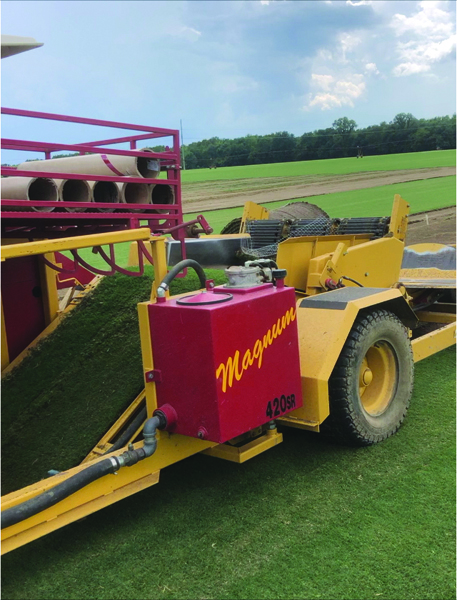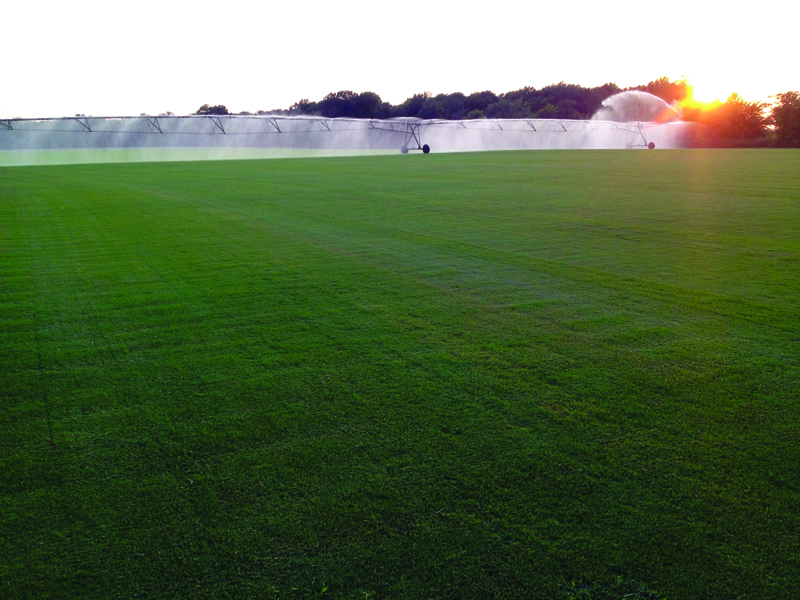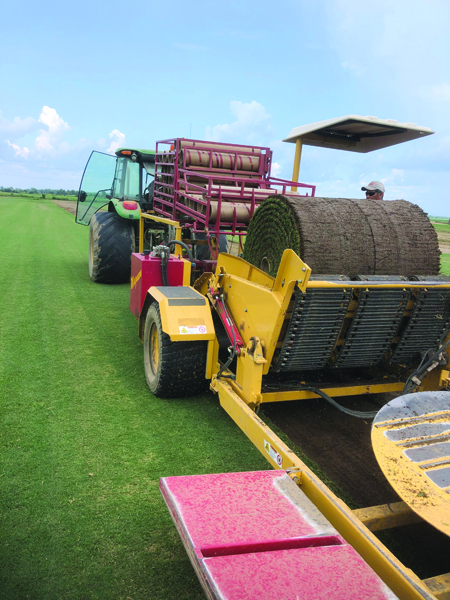Providing Superior Customer Service
By Aimee Robinette
Tunica native Paul Battle IV knows just how much greener the grass is on the other side. The owner of Battle Sod Farms, this University of Mississippi graduate has taken his business degree and coupled with a love of the outdoors.
“I grew up on a very diversified family farm in Tunica,” says Battle. “I spent every summer working on the cotton farm where I started out ‘chopping’ cotton and later driving a tractor. Soon after graduating from Ole Miss, I quickly realized that the business world, office life, coat and tie did not suit me, so I left that behind and went to work for a large landscaping firm and quickly became an irrigation foreman.
“I enjoyed working in construction and landscaping and also was getting to travel for some large projects. The most notable of which was on the Biltmore Estate in Ashville, N.C.,” he says. “It was quite an experience for this flat land delta kid to be working in the mountains of Asheville. About two years into my short career in landscaping/irrigation, my grandfather called and asked if I would be interested in starting a sod farm. At the time, row crop farming was not very profitable and he was eager to diversify and benefit from the housing construction in north Mississippi as well as the construction associated with the casino industry.”
Battle, who is married to Hallie Swetland Battle, didn’t put too much thought into the name of his business, since their row crop operation was Battle Farms, it just made sense to call it Battle Sod Farm. However, he has retained a respectable and manageable acreage of 225-300 since May 2000.
Sodding is an interesting process and one that is down to a science.
“All of our grasses are hybrids that don’t produce viable seeds so in order to establish the fields, they must be sprigged. Sprigging is a slow, tedious process that involves digging sprigs, transporting to the field, loading onto the sprig planter, planting and immediately watering. Sprigs are highly perishable so the whole process must be completed within about a 24-hour time frame,” he explains. “Prior to sprigging, fields must be level, free of weeds, and have lime and fertilizer applied to address ph and nutritional needs. At sprigging we apply pre-emerge herbicides to help suppress weed infestation during the growth. Once a stand of young plants is established, a regimen of irrigation, fertilization and mowing is followed to maturity. Once the sod has reached full maturity, it is harvested in 16-inch by 24-inch slabs that are stacked on a pallet holding 172 pieces.”
Pallet sod is perfect for smaller projects and do-it-yourself installations because it doesn’t take any special equipment-only a strong back and the will to do a little dirty work, according to Battle.
“We also harvest sod in rolls that are 42- feet by 103-feet long. Contractors and commercial landscapers usually use the rolled sod. Big rolls are an efficient way to cover large areas very quickly, but they do require specialized equipment and an experienced operator to get the best results,” he adds. “After initial field establishment and first harvest, the field may be re-established from rhizomes left in the field during harvest. The growth is similar to establishing from sprigs. After several years of production, fields may need to be renovated to address drainage issues or rutted or rough spots. This involves conventional tillage and leveling then sprigging.”
As one can imagine, the key to sod is “water, water, water,” says Battle.
“New sod must be watered immediately and kept moist for two weeks. Many people choose to lay sod during fall and early spring when the summer heat is not so intense. This saves watering and often you are more likely to get rainfall,” he says. “I’m often asked: ‘what do you spray’ or ‘put on’ sod to make it look so good? The simple answer is: water, sunshine, and proper fertilizer. It also helps to start with the right grass that is only available from a high-quality grower.”
Battle says the sod business is a customer service business.
“I have become close friends with many of my customers and have enjoyed the beneficial relationship between producer and end user. I am most proud of the fact that I have been in business for twenty-one years. The housing crisis of 2008 drastically reduced demand for sod and many producers left the industry. My business emerged from the recession that followed the housing crisis as a much leaner, more efficient operation,” he says.





